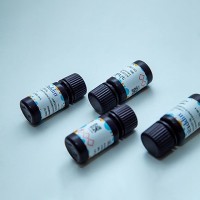Distinguishing Phosphatidic Acid Pools from De Novo Synthesis, PLD, and DGK
互联网
608
In plants, phosphatidic acid (PA) functions as a metabolic precursor in the biosynthesis of glycerolipids, but it also acts as a key signaling lipid in the response to environmental stress conditions (Testerink and Munnik, J Exp Bot 62:2349–2361, 2011). In vivo 32 P-radiolabeling assays have shown the level of PA to increase within seconds/minutes of exposure to a stimulus. This response can be due to the activity of diacylglycerol kinase (DGK) and/or phospholipase D (PLD). A method is described to investigate which of the pathways is responsible for PA accumulation under a particular stress condition.
First, a differential 32 P-radiolabeling protocol is used to discriminate 32 P-PA pools that are rapidly labeled versus those requiring long prelabeling times, reflecting DGK and PLD activities, respectively. Second, to specifically monitor the contribution of PLD, a transphosphatidylation assay is applied, which makes use of the artificial lipid phosphatidylbutanol as an in vivo marker of PLD activity.









